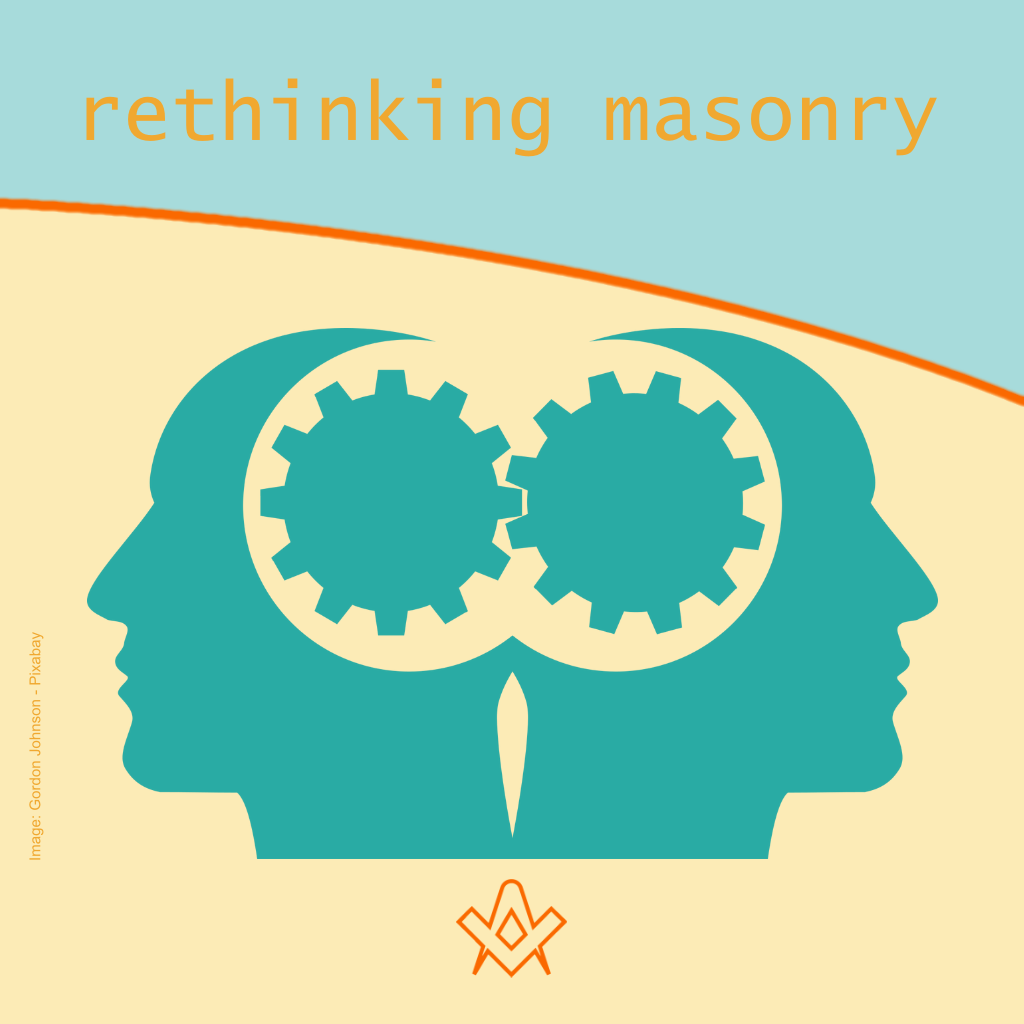There are many challenges within Freemasonry today, one of the least spoken challenges happens to be the modern-day translation of specific words and phrases used within our Society.
![]()
What does it all mean and where do I go from here?
There have been many viewpoints registered through print, blogs, social media, and podcasts, discussing the so-called esoteric meanings behind the words and symbols of the fraternity’s rituals, as well as the misuse, abuse and mischaracterization of these same words and phrases.
This also applies to words to describe our fraternity. It is no wonder that we often have a confused newly raised brother asking, “What does it all mean and where do I go from here?”
Therein lies perhaps the biggest problem; if one has to ask the question, we have failed to inculcate not only the lessons, but the meaning and purpose of our rituals to these brothers when they were candidates.
We focus on a candidate’s ability to memorize and regurgitate the words, and virtually no time on what those words mean and why.
If we do, it is usually some contrived, simplified definition of the symbols, the words, and rituals.
These are the symptoms of a disease, and that disease is named Apathy.
We throw around words like “esoteric”, “mysteries”, and “secrets” as if they (the candidate) should already understand what those words mean to Masons, and not what society says they mean.
For other Masons, these words are things to avoid or argue against the opposite of what their intended meaning is or should be.
One can see examples of these challenges everywhere within Freemasonry.
Not very long ago there was a national Masonic writing competition which begged the question of Masonic Renewal and what it should mean to a brother.
The top three essays provided some valuable insight into what challenges the fraternity faces today.
They are not what one would assume, not the declining membership, or educational issues (directly), but something much deeper.
One of the most striking options suggested by one essay was a complete overhaul of ritual by simplifying the language used to make it understandable (modernized) for new, younger Masons (it took second place).
Considering that the essay winners were chosen by Masonic leaders, reaffirmed what Bro. Thomas W. Jackson stated in a recent essay, “American Freemasons were the most ignorant Freemasons in the world”, and then further clarifying, “that ignorance does not mean stupidity; it means a lack of knowledge” (Jackson, Journal of the Masonic Society, 2020).
So, where does one begin to rectify this problem?
How many of our brothers read and studied the written words of our forebears of the Craft?
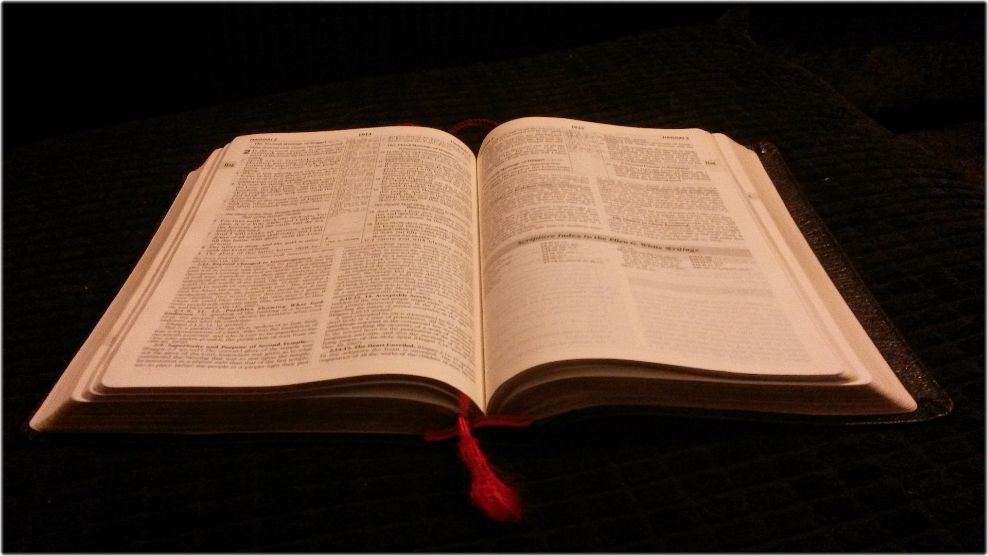
How many of us have used words like “secret/secret society” (or the modern day catch phrase “society with secrets”), esoteric, mysteries, sublime and so many of the other words and phrases within our rituals and have never bothered to properly define these words from a Masonic perspective, or even use a dictionary to gather a better understanding of these same words?
Many recent articles in our vast publications of Masonry often prove the authors have not. Take for example this quote:
Secrecy is the hallmark of two different kinds of societies – secret societies and societies with secrets.
Secret societies are those that keep their membership secret, while societies with secrets are those in which the members are known, but some material is kept hidden.
– Beatty, 2020
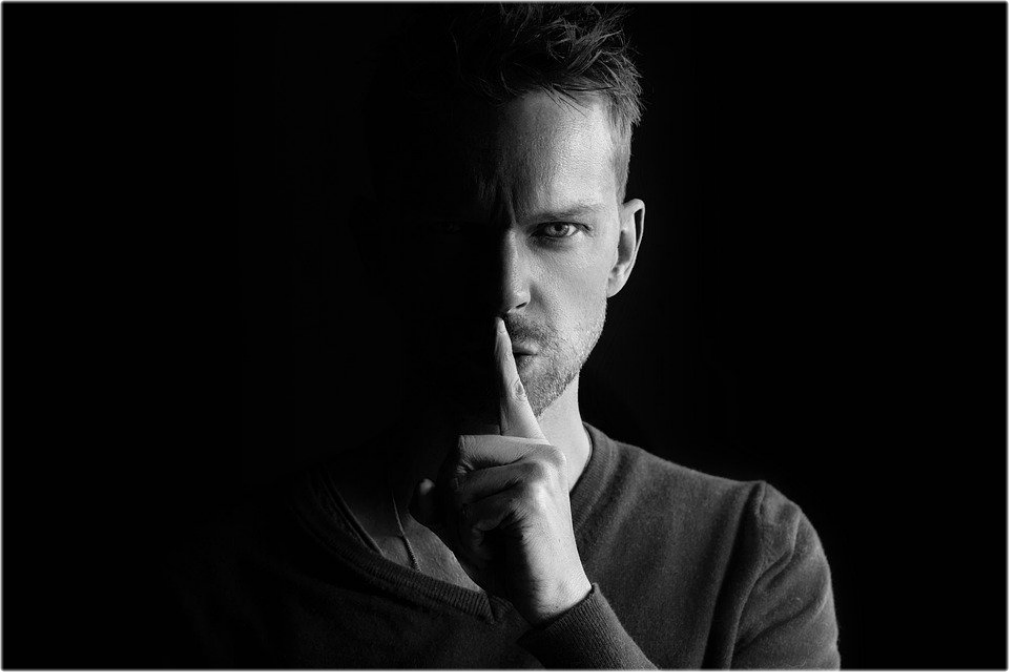
Secret / Secret Society
Oxford Dictionary – Secret Society: an organization that does not allow people who are not members to find out about its activities and customs.
Merriam-Webster – Secret Society: any of various oath-bound societies often devoted to brotherhood, moral discipline, and mutual assistance.
When you consider all the “secret societies” we know about from a historical perspective and whom were members, how did this so-called definition begin to circulate?
Many of the better-known archaic mystery schools we consider secret societies.
Names like the Mysteries of Isis, Eleusinian Mysteries, Mithraism, Pythagorean, Hermetic Order of the Golden Dawn, Rosicrucians, Templars; the list is endless.
We know many of the temples and buildings that were used in these schools, as well as many of the individuals who were members.
Caesar, Plato, Pythagoras, Ashmole, Mathers, Westcott, DeMolay; again, virtually an endless list of famous names.
These schools or secret societies had many things in common; they had different levels of initiation, secret oaths, fraternal assistance, buildings and temples, public ceremonies, charity to the poor, and more importantly, different meanings and symbols for the initiated compared to the public.
These Mystery Schools have always hidden in plain sight. They built temples all over the world and provided services to the public and ceremonies behind closed doors only for members.
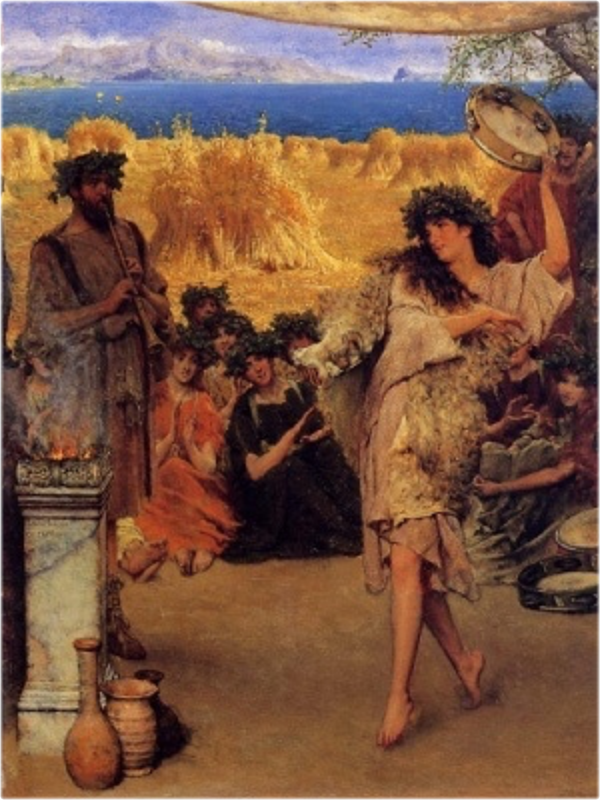
The Eleusinian and Bacchic Mysteries, by Thomas Taylor, J. W. Bouton, The De Vinne Press [1891]
Would we consider the Jewish faith to be a secret society, or the Christian Church?
Should we include only those individuals in the Jewish faith allowed to study the Kabbalah, since only certain individuals of that faith are “initiated” into the study.
Our own Masonic legend regarding Solomon’s Temple tells us that only the initiated are allowed into the Sanctum Sanctorum.
So too the early Christian Church was considered a secret society.
The early Church also had certain signs and symbols in which they could be recognized only by other Christians.
The ichthys as one example:
“In Greek (ichthys) meaning fish was adopted by early Christians as a secret symbol”
– Rasimus, 2011
enabling these early members to know one believer from one who was not.
“You have heard as much of the mystery as we are allowed to speak openly in the ears of all; the rest will be communicated to you in private; and that you must retain within yourself…
Our mysteries are not to be made known to strangers”
– St. Gregory Nazianzen, Bishop of Constantinople, 379 AD

Ichthys symbol as adopted by the Christian Church By Fibonacci – Drawn by Fibonacci, modifying Lupin
Too often we as Masons have conceived that our only secrets are a grip, certain words, and signs.
This is far from actual evidence. The true secrets of our fraternity are much more than just a few quant perceptions, otherwise we would be just another social club, or a charity that requires certain steps for membership.
This was not the intended purpose of the specific strict requirements for membership.
If these are all our secrets, then we would just be another college fraternity and nothing more.
There is more to Masonry than a few gestures or words, much more; otherwise, authors would not have been concerned about divulging fraternal “secrets”.
“But, after consulting with many conscientious as well as eminent members of the fraternity, the author was confirmed in his belief that nothing is said in the book which discloses any of the essential secrets (sic) of the order”
– Brown, 1882
The creators of our fraternity understood there were many secrets to be kept and discovered, thereby creating a “system” to perpetuate the understanding of those secrets to the individual candidate by degrees, who then must discern what these “secrets” are for themselves.
“If you shall secure and keepe secret the obscure and intricate parts of the science, not disclosing them to any but such as study &use the same (sic)”
– Sloane MS, No 3848, 1646, from Hughan, 1872
Some may argue that these “secrets” were meant only in an operative sense of masonry.
If this were true, then almost one hundred years after the first creation of a speculative Grand Lodge, Masons would not have needed to state:
…further you shall diligently frequent the Lodges, in order that you may constantly receive instruction, preserve old customs, and faithfully keep everything secret which you may have learned concerning Masonry, that strangers may not enter, in an irregular way.
– Sloane MS, 1810, from Hughan, 1872
If there were no need for these secrets regarding operative masonry to be kept any longer, then we would not require an individual to swear an obligation in each degree to keep our secrets inviolate. Even Anderson’s Constitutions states:
You shall be cautious in your Words and Carriage, that the most penetrating Stranger shall not be able to discover or find out what is not proper to be intimated, and sometimes you shall divert a Discourse, and manage it prudently for the Honour of the worshipful fraternity.
– Anderson, 1723
There would be no need in Mackey’s words to claim that;
“The fraternal order of Free and Accepted Masons, or the Freemasons, is a secret society”
– Mackey, 1906
Or “Gould, finding little plausibility in the efforts to link Freemasonry with ancient secret societies”, (Coil, 1954, pg. 25).
Why would Robert Freke Gould, a well-known Masonic writer of his time, attempt to link Masonry to other secret societies if he was not part of one?
Perhaps Richardson might shed some light?
“Mankind outside a Masonic Lodge does not care a straw what takes place within that secret conclave”
– Secret Society Rituals, Richardson, 1950, pg. 206
Or going back even further;
“Believing as we do that the present Association of Freemasons is an out-growth of the Building Corporations and Guild of the Middle Ages, as also the lineal descendant and sole representative of the early secret sodalities…”
– Hughan, 1872 (Merriam-Webster defines sodality as an organized society or fellowship).
Perhaps, Masons choose to deny our secret society because of the numerous negative connotations that modern conspiracy theorists seem to attach to these words.
These “cowans” should not concern us. All anyone needs to do is Google the words “secret+societies” and right at the top of a long list is our fraternity.
This shows evidence of what Bro. Jackson noted earlier; there is actual ignorance of whom and what our fraternity is.
Our society was and is not intended just for good men, it is intended for special men.
Men devoted to upholding the obligations we require of them. To study, to improve, and to make themselves better.
Or in the words of J.D. Buck:
Just as all life is an evolution, so is all real knowledge an initiation; and it proceeds in a natural order, and advances by specific “degrees”.
The candidate must always be worthy and well qualified, duly and truly prepared.
That is, he must perceive that such knowledge exists; must desire to possess it; and must be willing to make whatever personal sacrifice is necessary for its acquirement.
He must have passed beyond the stage of blind belief or superstition, the bondage of fear, the age of the fable, and the dominion of appetite and sense.
This is the meaning of being “duly and truly prepared”.
– J.D. Buck, Mystic Masonry, 1925
![]()
…a beautiful system of morality veiled in allegory and illustrated by symbols
Buck’s statement certainly sounds like there is more than a handshake and a word.
George Oliver (1855) would not have described Freemasonry as “…a beautiful system of morality veiled in allegory and illustrated by symbols”, if there wasn’t more than a word or a handshake.
There would be no need to use words such as mystery(ies), no need to keep secrets, and no need to “veil” anything in allegory or symbol.
Or no need for Pike to state:
“The highest claim of Freemasonry to consideration is that it is a philosophical truth, concealed from the masses and taught to the adepts by symbol”
– Pike, Esoterika, 1888
Historians, modern academics, society, even conspiracy theorists, consider the fraternity as a secret society; it seems only Masons no longer consider themselves part of such an organization.
The same individuals who will state, “we are not a secret society, but a society with secrets”, are the same individuals who also claim that our only so-called “secrets” are a grip, a word, or a sign.
Those who fail to go into a deeper investigation have become what Albert Mackey called “Parrot Masons”. Mackey defines this as:
One who commits to memory questions and answers of the catchetical (sic) lectures, and the formulas of the ritual, but pays no attention to the history and philosophy of the institution; called a Parrot Mason because he repeats what he has learned without any conception of its true meaning.
– Mackey, 1884, 1914
If we have truly become “Parrot Masons”, it would make sense as to why we would not want to be called a “secret society”, because we have lost the true secrets.
If our only “secrets” were those mentioned, then so many writers would not have been calling our fraternity a secret society when there were little or no secrets to begin with.
Esoteric
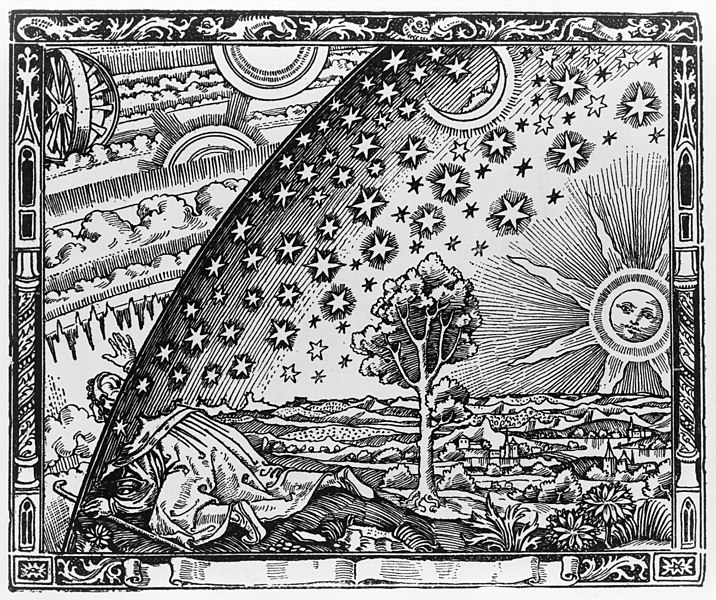
Flammarion engraving by an unknown artist – first appearance was in Camille Flammarion’s L’atmosphère : météorologie populaire Paris, 1888. pp. 163.
Merriam-Webster – Esoteric: from Greek esoterikos, from esotero, comparative of eso ‘within’, from es, eis ‘into’
1a: designed for or understood by the specially initiated b: requiring or exhibiting knowledge that is restricted to a small group
2a: limited to a small circle b: private, confidential
3: of special, rare, or unusual interest
The word “esoteric” is perhaps the most maligned, misused, misunderstood, and abused word used by Masons today.
The word “esoteric” appears to be undergoing a present-day re-definition.
Its meaning is changing to something completely alien to its etymology
Somewhere along the way, it seems to me, Brethren have come to interpret the term ‘esoteric’ in the context of an arcane philosophy
– Williams, Rocky Mountain Mason, 2014
The fact is all Freemasonry is esoteric, or perhaps a better way of stating this might be that all Masons should understand that our fraternity is esoteric.
This misunderstanding is also prevalent in the Masonic literature today, one example:
“Firstly, esoteric Masons are not that great as (sic) conveying their ideas. It is not necessarily their fault; esoterism is a rather complex and bewildering subject to explore in any field”
– Dey, 2020
Somehow the word began to be associated with something occult, implying something of a negative nature.
If the reader doubts that Freemasonry is esoteric, he needs to look no further than Dr Oliver’s description of Freemasonry as a;
“peculiar system of morality, veiled in allegory and illustrated by symbols”
– Oliver, 1849
Something veiled represents a thing that is hidden as do allegories and symbols based upon multiple hidden meanings.
Bro. Shawn Eyer, who is the Editor of Philalethes: The Journal of Masonic Research & Letters, presents a compelling group of definitions for esoteric:
The Private – In the first sense, the word esoteric is used in a somewhat constrained way to refer to those elements of Masonic work which are not for display outside a tiled lodge. In this definition “esoteric” is a condition, denoting private circumstances.
The Implicit Teaching – Here the focus is on hidden meanings which might be available within the tradition. Thus, the physical arrangement of exoteric and esoteric classes becomes symbolic of the reality of the situation, which is not about physical proximity at all.
Esotericism as an “ism” or body of Tradition – Esotericism is also used in a third sense; a systemic-traditional dimension. In this way esotericism can function as an umbrella term to refer to any number of traditionally secret or highly exclusive spiritual disciplines which have existed within or alongside more popular philosophical and religious currents.
The argument can be made that using the prescribed definition taken from its Greek root “from within” or “into”, that all our ritual is esoteric.
The current problem is most Masons only use the last definition today.
This is far from actual historical evidence. Pike wrote Esoterika, Morals & Dogma and the Esoteric Work of the 1st through 3rd Degree, According to the Ancient and Accepted Scottish Rite and understood that all of Freemasonry was meant to be “from within”.
“All genuine Initiation is, like evolution and regeneration, from within.
Devoid of this inner meaning and power, all rituals are but foolish jargon, and all ceremonies an empty farce”
– J.D. Buck, Mystic Masonry, 1925
Brothers will recall such statements such as: “that house not made with hands”, “it is the internal and not the external qualifications”, and finally to “endeavor to erect our spiritual building”, which are part of just one degree.
All prescribe a requirement from “within”. Upon review of every ritual one would find a deeply esoteric process designed to provide the “speculative” tools allowing a candidate to find that meaning within themselves.
These learned brothers understood that studies of astrology, Gnosticism, and the other ancient mystery schools, were byproducts of the Masonic “art”, not the foundation.
Steinmetz wrote:
“The average Mason is lamentably ignorant of the real meaning of Masonic Symbology and knows little of its esoteric teaching”
– Steinmetz 1948
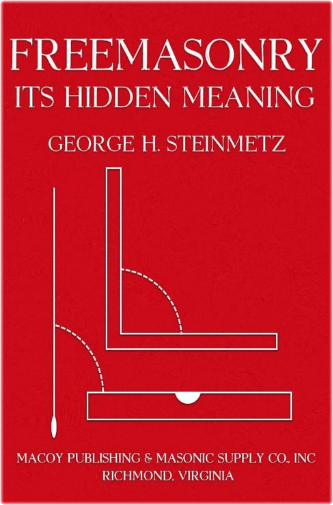
Steinmetz wrote his entire book with the intent of explaining:
…proper and plausible explanations of many of the symbols and allegories contained in the three degrees, and will stimulate him further to pursue the study of the deeper esoteric meanings of our exceedingly rich ritual.
There is no discussion of Hermeticism, tarot, or any of the so called “occult” doctrines within his book, rather he is specific in the esoteric discussion of only the three Blue Lodge degrees.
Yes, Freemasonry is extremely esoteric, too many brothers have forgotten that what they see and hear is only exoteric and seek the esoteric “outside” the fraternity before they fully understand the esoteric “inside” and eventually takes the man down a wayward path that leads away from the Masonic “art” and philosophy, not toward it.
Mysteries
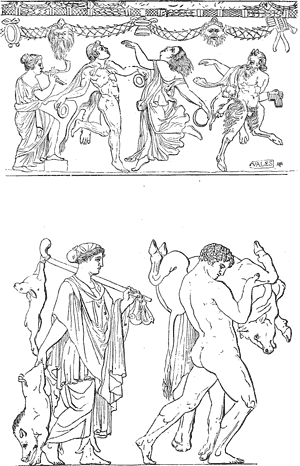
Eleusinian Mysteries – The Eleusinian and Bacchic Mysteries, by Thomas Taylor, [1891]
Oxford Dictionary – mystery/mysteries: something that is difficult to understand or to explain.
Merriam-Webster – mystery/mysteries: 1a) something not understood or beyond understanding, 1c) the secret or specialized practices or ritual peculiar to an occupation or a body of people.
The word mystery(ies) is used often within ritual, and looking at the two definitions all would possibly represent the intended meaning, if we continue on the ideal that Masonry is founded on the principle and symbols with dual or hidden meaning.
Yet, if we provide just a cursory lesson of the meaning, they would normally ignore the most common definition of something difficult or hard to explain.
Many would assume it would only apply to Webster’s definition of specialized practices or ritual.
Even the words of the Apostle Paul state:
“Behold, I show you a mystery…”
– 1 Corinthians 15:51
Which in Greek (mysterios/musterion) means a secret revealed only to the initiated (Strong’s Concordance, 1890-2017).
This leads us back to the word “secret” once more. A mystery is a secret unknown, unless you are a member of specific a body of people, or in Masonry, the initiated.
Sublime
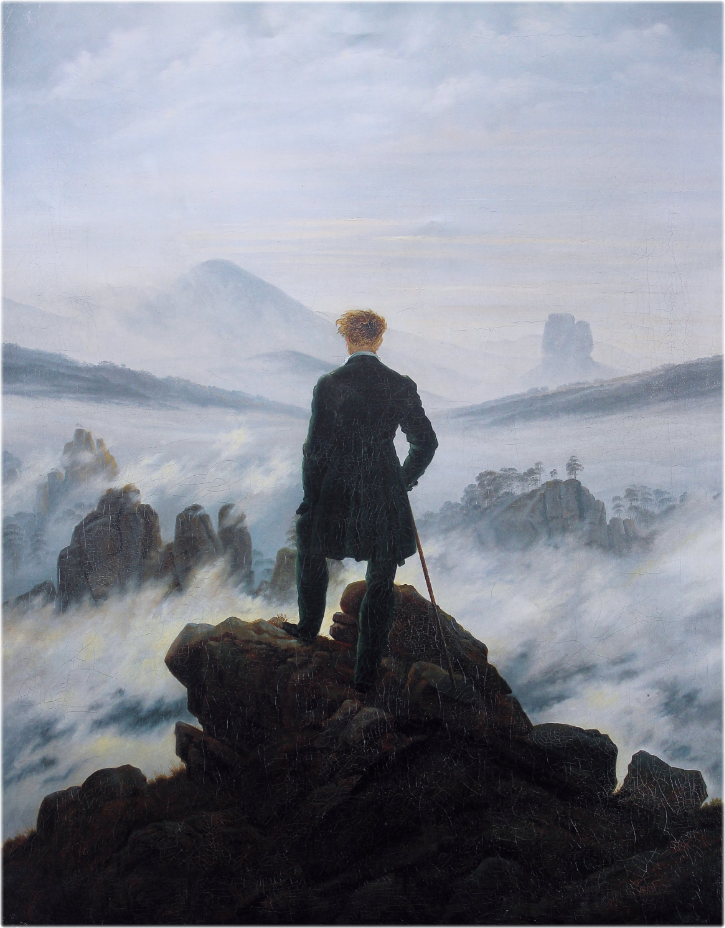
Caspar David Friedrich – Wanderer Above the Sea of Fog, 1818. The artist wanted to capture and portray an instant of sublimity.
Merriam-Webster – Sublime:
(1) to elevate or exalt especially in dignity or honor,
(2) to render finer (as in purity or excellence), b: to convert (something inferior) into something of higher worth adjective
1a: lofty, grand, or exalted in thought, expression, or manner,
b: of outstanding spiritual, intellectual, or moral worth,
c: tending to inspire awe usually because of elevated quality (as of beauty, nobility, or grandeur) or transcendent excellence.
Master Masons have been raised to the sublime degree, yet it is amazing how many have never dedicated their memories to what the word represents or to the required work and knowledge necessary to achieve any but the first part of the definition.
Conclusions
Perhaps one of the greatest errors any amateur / professional historian and researcher can make is discovering specific words and phrases written many years prior and defining these words and phrases in modern terms.
This often dilutes, diminishes, and alters the original intent of those words and phrases.
For someone to understand the original intent, one must “get in the heads of the original authors”.
Then, and only then will they be able to understand the true purpose of those words and phrases.
To do so requires a study of men like Anderson, Preston, Webb, Pike, Mackey, Buck, Steinmetz, and so many others who have written about the Craft for over 300 years.
Often, these writers have been forgotten, or worse yet left to the dustbin of outdated authors considered not worthy of study.
These men directly impacted the formation, creation, and philosophy of our Craft we use today, yet, most Masons know little more than their names much less their thoughts.
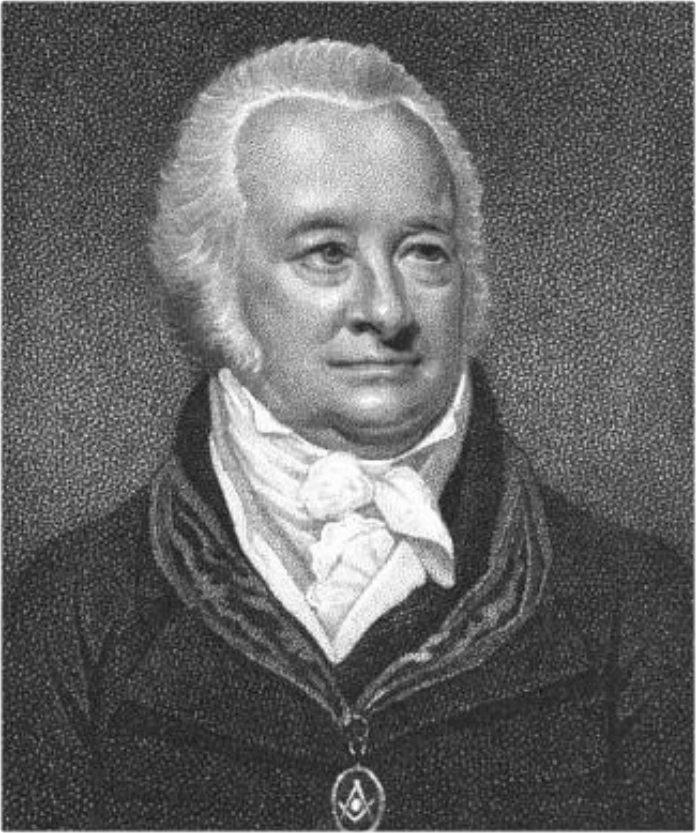
William Preston, from the 1812 edition of Illustrations of Masonry
This is not a new problem, Pike lamented in his Esoterika, that only two or three brothers out of a hundred would take the time to understand Masonic symbolism (Pike, 1888), Mackey (1875), Steinmetz (1948) and the previously mentioned Thomas W. Jackson have lamented the ignorance of our Masonic Brothers.
Reviewing some of the noteworthy words previously mentioned, and realizing these are but only a few of the long tradition of words and phrases which we must rediscover and understand within our ritual; must be our goal.
When a Mason hears seemingly superficial statements such as “is he duly and truly prepared, worthy and well qualified” fifteen times, yet finds nothing more important than making sure the candidate is dressed properly; or “where were you prepared to be a Mason” and the response does not cause a deeply esoteric undertaking for further study; or a “simple” statement as, “to the Greeks, therefore, and not the Romans…” finding nothing more than a discussion on architecture; then we need to re-educate ourselves.
This is the essence of our need to rethink Freemasonry.
Each word, each phrase, has a much deeper philosophical meaning and requires no less of our time than studying tarot, sacred geometry, or the Hermetica.
First and foremost, we must understand our ritual not as “Parrot Masons”, but truly understand the allegory and symbolism as Master Masons.
We must understand as much of our history, knowledge, and wisdom that has been handed down over more than 300 years.
More importantly, we must once again teach this knowledge in our lodges, otherwise it may be lost forever.
Freemasonry doesn’t just need new members; it needs the right kind of new members.
The kind of men who are truly worthy and dedicated to seeking this hidden knowledge and not only maintaining that knowledge but teaching it.
Garnering the wisdom which is hidden within our rituals and passing that same wisdom to the next generation of Masons.
When we use these words outside of their intended definitions and meanings, we do nothing more than diminish our Craft.
Any Mason today can name the great men who have been members of our fraternity.
These men were the movers and shakers of their day. They were great philosophers, thinkers, and architects; some of the greatest minds of their generations.
In the same conversation, many of these same men will lament that today none of these types of men exist within the fraternity.
This is far from the truth, there are many men today who have the same aptitude as these other men.
These men study, practice, and research their Craft. These are the men who have attempted to uncover our mysteries and secrets within our doctrines and philosophy.
Only then have they sought out other older doctrine outside the fraternity, and have studied men like Socrates, Aristotle, and Plato – these three great pillars of Western Philosophy – and attempted to align them with Masonic doctrine and principle that are esoteric.
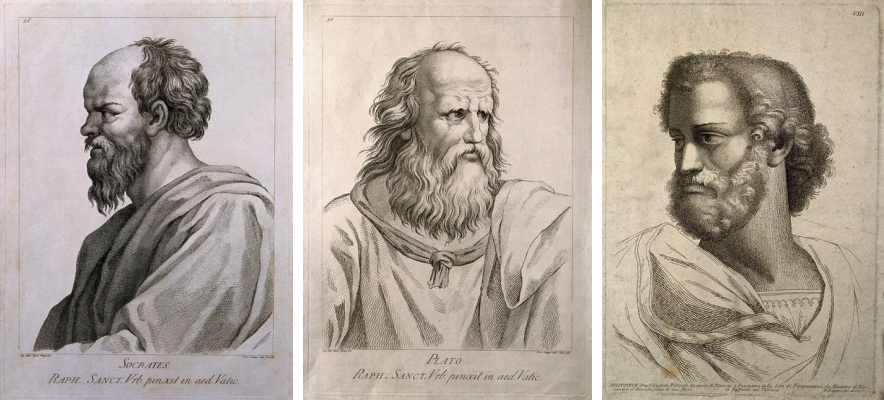
Left: Socrates. Line engraving by D. Cunego, 1783, after A. R. Mengs after Raphael..
Centre: Plato. Etching by D. Cunego, 1783, after R. Mengs after Raphael.
Right: Aristotle. Etching by P. Fidanza after Raphael Sanzio.
Credit: Wellcome Collection
This may be one of the reasons you often hear brothers disregard the higher degrees in the Scottish Rite or York Rite bodies.
They lack the understanding of the lessons within those bodies and have not searched deep enough into the Blue Lodge Degrees, thus asking brothers to ignore their obligations by advancing up the winding staircase of wisdom.
Therefore, we must rethink Masonry. This is not meant to be a condemnation of our fraternity.
It is a condemnation of the idea that the fraternity should accept “average” within our lodges.
We must regain that which has been lost, and it must start at the grassroots of the organization, our members.
If these individuals perpetuate the knowledge, and grow their wisdom of our Craft, it will not take long for that knowledge and wisdom to reach those Lodges once again.
We must remove the mundane in our stated meetings, remove the ambivalent educational rhetoric, and delve not only into our own history, but the meaning of that same history, especially our rituals.
Otherwise, we will continue to initiate, pass and raise nothing more than Mackey’s “Parrot Masons”.
We can no longer perpetuate long held platitudes, phrases, and misunderstood words; we must become true seekers of the light.
We are charged to “whisper good counsel, admonish him of his errors…to bring about reformation” so they may fortify their minds against the snares of the insidious, and “to guard them against every allurement to vicious practices”.
We are losing our purpose and our philosophy which made these types of men once flock to Freemasonry.
We must once again heed Anderson’s words written in the first Grand Lodge Constitutions, “You shall be cautious in your Words and Carriage, that the most penetrating Stranger shall not be able to discover or find out what is not proper to be intimated, and sometimes you shall divert a Discourse, and manage it prudently for the Honour of the worshipful fraternity” (sic)
– Anderson, 1723
We must properly educate that philosophy, or like so many other secret societies we will cease to exist.
Not from lack of membership, not from principle, but rather from apathy regarding those principles, doctrines and philosophy that has been taught and survived for more than 300 years.
Footnotes
References
Anderson, J. (1723). The constitutions of the free-mason. London, UK.
Beatty, J. (2020). “Secrecy, ciphers, codes, and hermeneutics”. Journal of the Masonic Society, Spring 2020, Issue 48.
Brown, R.H.B. (1882). Stellar Theology & Masonic Astronomy. Merchant Books, Buffalo, NY.
Buck, J.D. (1925). Symbolism of Freemasonry or Mystic Masonry. Regan Publishing, Chicago, IL.
Dey, P. (2020). “The problem with esoteric masonry”. Rocky Mountain Mason, Issue 22.
Eyer, S. (2008). Defining Esotericism from a Masonic Perspective. Harvard University, Cambridge, MA.
Hughan, W. J. (1872). Hughan’s Old Charges of the British Freemasons, London, England
Jackson T.W. (2020). “Masonic education: Looking to the future”. A lecture before the Grand Lodge of Alaska 02/07/2020. Journal of the Masonic Society, Spring 2020, Issue 48.
Mackey, A.G. (1925). The History of Freemasonry. Gramercy Press. New York, N.Y.
Pike, A. (1890, 2008). Esoterika: The symbolism of the blue degrees of freemasonry. The Scottish Rite Research Society. Washington, D.C.
Rasimus, T. (2011). “Revisiting the Ichthys: A Suggestion Concerning the Origins of Christological Fish Symbolism”. pp327-348 in Mystery and Secrecy in the Nag Hammadi
Collection and Other Ancient Literature: Ideas and Practices. Biblical Studies, Ancient Near East and Early Christianity E-Books Online, Collection 2012, 76.
Richardson, J. (1950). Richardson’s Monitor of free-masonry. Ezra A. Cook, Publisher Inc. “Secret Society Rituals”, Chicago, IL
Steinmetz, G. (1948). Freemasonry: Its Hidden Meaning. Macoy Publishing & Masonic Supply Co., Richmond, VA.
Strong, J. (1890-2017). The Exhaustive Concordance of the Bible: Showing every word of the text of the common English version of the Canonical Books: Musterion. Hunt & Eaton, NY, NY
Williams, B. (2014). “Esoteric” is now…esoteric. Rocky Mountain Mason, Vol. 2, Issue 2.
Article by: Francis R. Fritz
Francis R. Fritz lives in Phoenix, Arizona and is a member of Glendale, AZ Lodge #23, 32⁰ Scottish Rite Mason, a Knight of Saint Andrew, Valley of Phoenix, Orient of Arizona, the Masonic Society, the Philalethes Society, and the Scottish Rite Research Society and Local Secretary for Quatuor Coronati.
He is currently Worshipful Master of Arizona Research Lodge #1 and a Director of the George Roskruge & S. Barry Casey Masonic Library & Museum


The History of Freemasonry: Its Legendary Origins
By: Albert Mackey (Author)
The fraternal order of Freemasons has been a mysterious organization since its origins centuries ago.
Many historical figures such as Voltaire, Wolfgang Amadeus Mozart, George Washington, and Benjamin Franklin were Freemasons and made the society all the more intriguing.
This classic text illuminates the society’s origins as well as the philosophical and ritual foundations on which it is built.
Readers can explore the mythical tales about Freemasonry and learn how they relate to the historical truth.
Included are excerpts from rare sacred documents along with explanations of their significance, plus black and white illustrations.

Recent Articles: membership
 A Rose by any other Name may not be the same Explore the profound distinctions between conferred and transmitted Masonic degrees with Bro. Scott Wisdahl. Delve into how presentation quality, personal impact, and setting shape these rituals, and consider the potential for digital adaptations in modern Masonic practices. Join the discussion on enhancing the Masonic journey and preserving its essence. |
 Progression through the Degrees; a Rite or a Privilege? Exploring the layered journey of Freemasonry, Matt DA Fletcher probes the essence of progression—whether it's a mere rite or a privileged path. Delve into a nuanced perspective where every degree is not just a milestone but a fraction of a grander continuum. |
 Quantity vs Quality within the world of Freemasonry Dive into the compelling debate of quantity vs quality within the world of Freemasonry. Discover the transformative focus on attracting members aligned with the institution's values, promising not only growth but quality growth. High-value individuals assure sustainable development with their commitment to serving the brotherhood. |
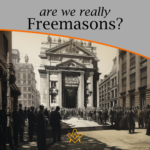 Maybe Freemasonry has opened its doors too wide. Perhaps some have not understood that the survival of Freemasonry in order to achieve its sublime purpose lies not in the number of members it has, but in their quality. Maybe we need less members and more Freemasons. Less men in Freemasonry and more Freemasonry in men. |
 What is ritual and why is it important? P1 Delve into the profound world of Freemasonry rituals and their significance. This insightful piece unravels the underlying importance of rituals, their impact on participants, and the transformative power they hold. Uncover why these centuries-old traditions remain integral to Masonic practice today. |
 Could Freemasonry be helpful for young men? Unravel the Masonic Brotherhood: Could Freemasonry be the antidote to modernity's challenges for young men? Dive in as we explore the Masonic world, its principles, camaraderie, and how its traditional rituals could help forge stronger identities in an increasingly complex world. |
 Discover the remarkable benefits of Lodge Meetings on your well-being. From fostering connections to combating stress, learn how these male-oriented gatherings offer an antidote to anger, hunger, isolation, and exhaustion. Dive into the power of shared experiences, understanding, and camaraderie. Your key to improved mental health awaits inside. |
 Tutorial for a Worshipful Master Unlock the Secrets to Leadership Mastery in our Worshipful Master's Tutorial! Brother Antonio Biella shares step-by-step guidance for Masonic Lodge leaders on honing their roles, duties, and future vision. Discover how to drive growth and engagement in your Lodge, setting ambitious goals and inspiring member participation. |
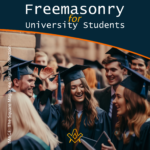 Freemasonry for University Students What are social skillset challenges facing students when they graduate from university ? |
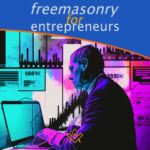 How the Core Values of Freemasonry; Brotherly Love, Relief and Truth Can Be Applied to Improve Productivity For Entrepreneurs |
 Why I became a Freemason: a personal journey of self-improvement Salik Tariq shares his reasons for becoming a Freemason – a journey of self-improvement, finding a community, and personal growth. |
 Freemasonry: Coming out of the Cloisters This paper examines the fundamental tensions on the lines of religion, gender and political ideology that exist in some jurisdictions of Freemasonry. It is on the first of these, religion, on which he makes an initial and exploratory focus. - by Gerald Reilly |
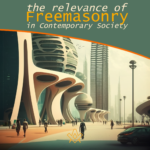 The Relevance of Freemasonry in Contemporary Society The role of Freemasonry in contemporary society is an indispensable one. Despite the challenges and misconceptions it faces, the organization remains steadfast in its humanitarian pursuits and commitment to personal growth and self-betterment. Through its efforts to evolve and adapt to the changing needs of its members and the world, Freemasonry continues to be a vital force in shaping a better future for all. |
 Has Freemasonry managed to revive and thrive after the darkness of the Pandemic? Robert Lomas gives us some (promising) insights. |
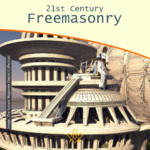 21st Century Freemasonry – a Sign of the Times? A recent article in The Times of London highlighted the dilemma 21st Freemasonry is facing. In this article one Master Mason shares his views of the strengths, and the challenges of modern Masonry. |
 A concept that is both based on our Freemasonic rituals and what we understand as teamwork. This article by Chris Batty examines why teamwork in the lodge is the network that binds us. |
 Lebanese Freemasonry has been both witness to and sometimes participants in turbulent events and forces, which shaped and influenced their world. |
 Is a Masonic Tradition Necessary? Dealing with Masonic tradition is a complex subject that requires careful analysis in order to reach a balanced point on the best etymological definition and the set of discourses and practices, which often end up being presented as such, without, however, presenting bases that support them, often serving only as a discourse that restricts and controls the masses. Fernando Rodrigues de Souza debates this complex subject. |
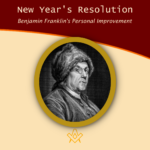 New Year's Resolution with Benjamin Franklin's Personal Improvement Are you ready for a new year's resolution challenge ? To accomplish his life’s goals, at 25 ( around 290 years ago ), Benjamin Franklin developed and committed himself to a personal improvement program that consisted of 13 virtues. You are invited to join me in practicing his daily routine for 2023. |
 The Alberta Masonic Higher Education Bursary Fund is to help the next generation of Albertans, our children and grandchildren, to obtain the education they need to lead successful lives and contribute to the welfare of mankind. As you can see from this little lesson of our history, education is truly a Masonic obligation. |
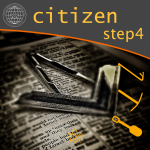 To be a Better Citizen of the World: Step 4 A value proposition for Pure Ancient Masonry as defined in terms of Citizenship; the allegories, symbolism and lessons are a blueprint for all Freemasons to be a better citizen of the world. |
 To be a Better Citizen of the World; Step 3 A value proposition for Pure Ancient Masonry as defined in terms of Citizenship; the allegories, symbolism and lessons are a blueprint for all Freemasons to be a better citizen of the world. |
 In connection with recent article about Freemasonry in the metaverse, we look at how an Egregore applies to Freemasonry in a digital world |
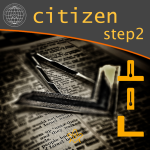 To be a Better Citizen of the World; Step 2 A value proposition for Pure Ancient Masonry as defined in terms of Citizenship; the allegories, symbolism and lessons are a blueprint for all Freemasons to be a better citizen of the world. |
 There are many brotherhoods in the world, and Freemasonry is one of the most significant and successful of them all. This article will be the focus two questions: the importance of brotherhood ? and is there room for improvement in Freemasonry? |
 Intergenerational relations in Masonry: challenges and possibilities Backed with scientific research, Professor Luiz Neto and Professor Alexandre Braune investigate the Intergenerational relations in Freemasonry and explores the challenges and opportunities. |
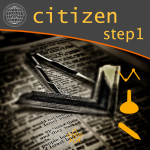 To be a Better Citizen of the World; Step 1 A value proposition for Pure Ancient Masonry as defined in terms of Citizenship; the allegories, symbolism and lessons are a blueprint for all Freemasons to be a better citizen of the world. |
 The Masonic Temple is a platform where both Freemasons and non-Masons, enthusiasts of real art and spiritual growth, connect to the new world of the metaverse. A Freemasonry in the metaverse project, based regular freemasonry principles. |
 Opportunity to fix the Sussex fudge Is there a value proposition for members, that under English Constitution Freemasonry, we have a 4 part offering; Entered Apprentice, Fellowcraft , Master Mason and Companion, conducted in a single craft lodge ? |
 Value Proposition of Freemasonry In addressing declining lodge membership and lack of attendance, we need to assess the value it offers to members. What is value, and what does it mean to you? |
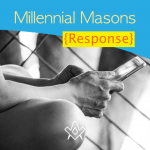 What is a 'Millennial' and what do they want from Freemasonry? You'll be surprised at the answers. |
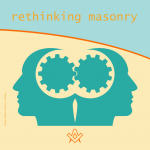 Let us help answer a fundamental question, from a confused newly raised brother asking “What does it all mean and where do I go from here?” |
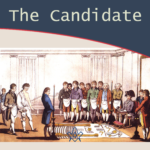 Written in 1930, much of the advice is still relevant today - although some may provoke further thought or debate! |
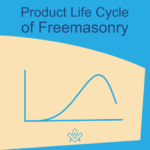 Product Life Cycle of Freemasonry An inconvenient truth about the product life cycle of Freemasonry |
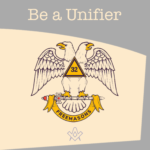 Freemasonry is local. This is where we need to start. We start with our Facebook friends, our neighbours, our colleagues, our lodges… |
 Freemasonry in the time of pandemic The Rule of Six. Localised lockdowns. Second wave? What do we do now?! The answer is simple - engage with members, promote Masonic education and get thinking outside the lodge. |
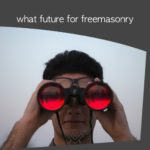 The current functioning of the Masonic movement has some positive aspects and others that are blatantly backward and counterproductive. |
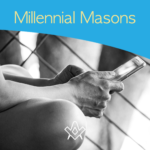 What is a 'Millennial' and what do they want from Freemasonry? You'll be surprised at the answers. |
 How to improve your Lodge Membership Marketing Program. |
 The Anti-Social Impact of Social Media The 'dark side' of social media and its negative effect on our mental health |
 If Freemasonry cannot meet, is this an opportunity to make a change to how we do things? |
 Has your lodge accepted an unknown candidate from the internet? Third in a three-part series looking at the process to accepting candidates via the internet |
 Is the brother of a brother a brother ? Rights to visit - recognition and regularity re-evaluated. |
 The second article in the Unknown Candidate series - Outlining the social media marketing process to attract the unknown candidate to make that first enquiry |
 Ask a random Freemason the purpose of Freemasonry and the likely response will be to “make good men, better”. Research undertaken by James Justin Davis Pennsylvania Academy of Masonic Knowledge. |
 Has your lodge accepted an unknown candidate from the internet? First in a three-part series looking at the process to accepting candidates via the internet |
 Mental Health - Raising its awareness and how we as Freemasons throughout the entire UK can help our fellow brethren and their families when they need it. |
 Share one thought why freemasonry is relevant today - Open question posted on Facebook with a very wide range of responses from Brethren across the globe |
 The Tipping Point of Freemasonry Why do brothers lose interest in Freemasonry and what can we do to get that spark back? At what moment did our own thoughts begin to waver? |
masonic knowledge
to be a better citizen of the world
share the square with two brothers

click image to open email app on mobile device
Tubal Cain
Masonic Aprons NFT
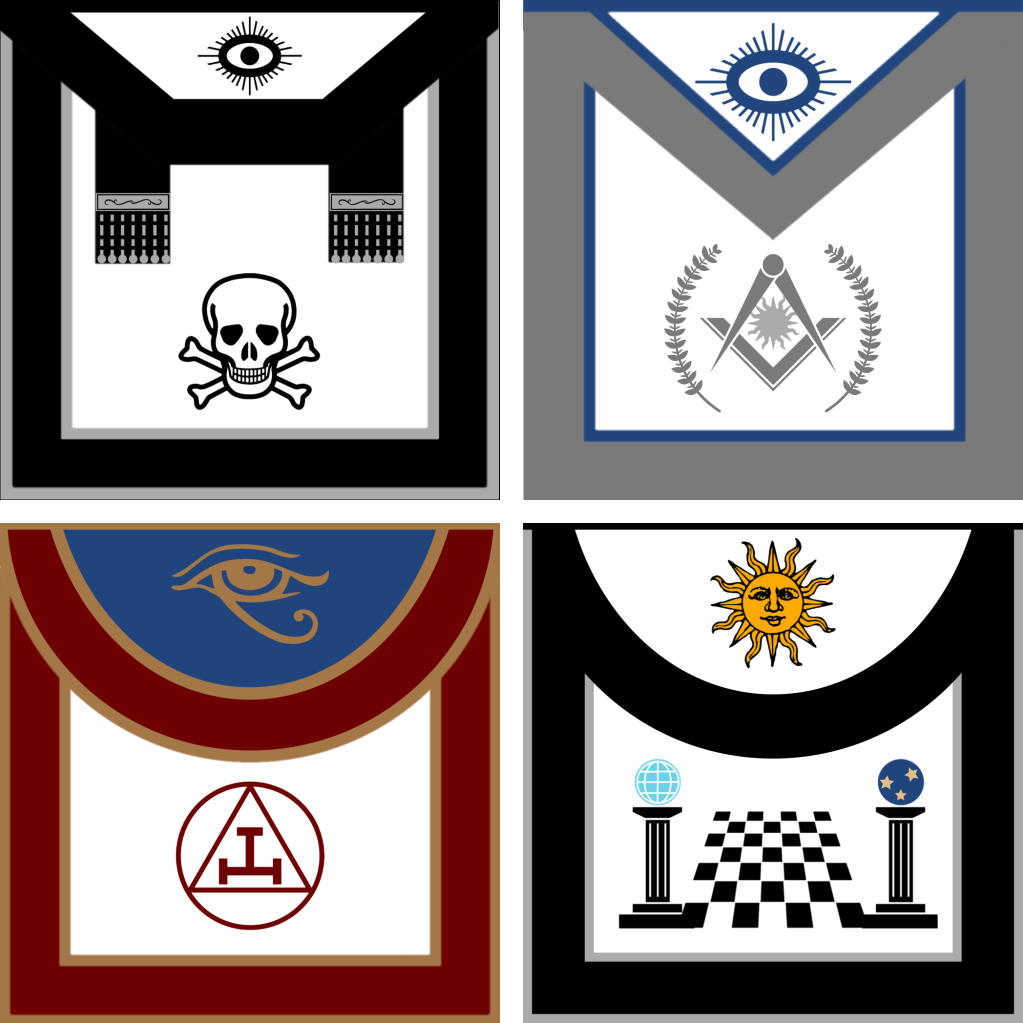



Each Tubal Cain Masonic Apron NFT JPEG includes a full size masonic apron and worldwide shipping
